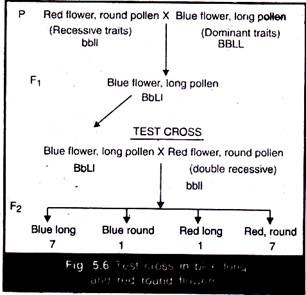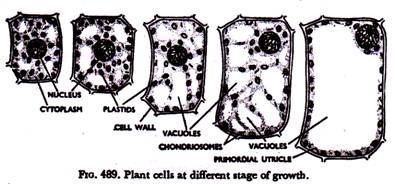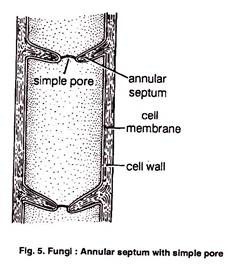ADVERTISEMENTS:
When two or more characters of parents are transmitted to the offsprings of few generations such as F1, F2, F3 etc. without any recombination, they are called as the linked characters and the phenomenon is called as linkage.
This is a deviation from the Mendelian principle of independent assortment.
Mendel’s law of independent assortment is applicable to the genes that are situated in separate chromosomes. When genes for different characters are located in the same chromosome, they are tied to one another and are said to be linked.
ADVERTISEMENTS:
They are inherited together by the offspring and will not be assorted independently. Thus, the tendency of two or more genes of the same chromosome to remain together in the process of inheritance is called linkage. Bateson and Punnet (1906), while working with sweet pea (Lathyrus odoratus) observed that flower colour and pollen shape tend to remain together and do not assort independently as per Mendel’s law of independent assortment.
When two different varieties of sweet pea—one having red flowers and round pollen grain and other having blue flower and long pollen grain were crossed, the F1 plants were blue flowered with long pollen (blue long characters were respectively dominant over red and round characters). When these blue long (heterozygous) hybrids were crossed with double recessive red and round (homozygous) individuals (test cross), they failed to produce expected 1:1:1:1 ratio in F2 generation. These actually produced following four combinations in the ratio of 7 : 1 : 1 : 7 (7 blue long : 1 blue round : 1 red long : 7 red round) (Fig. 5.6).
The above result of the test cross clearly indicates that the parental combinations (blue, long and red, round) are seven times more numerous than the non-parental combinations. Bateson and Punnet suggested that the genes (such as B and L) coming from the same parent (BBLL × bbll) tend to enter the same gamete and to be inherited together (coupling). Similarly, the genes (B and 1) coming from two different parents (such as BBLL x bbll), tend to enter different gametes and to be inherited separately and independently (repulsion).
ADVERTISEMENTS:
Morgan’s View of Linkage:
Morgan (1910), while working on Drosophila stated that coupling and repulsion are two aspects of linkage. He defined linkage as the tendency of genes, present in the same chromosome, to remain in their original combination and to enter together in the same gamete.’
The genes located on the same chromosome and are being inherited together are known as linked genes, and the characters controlled by these are known as linked characters. Their recombination frequency is always less than 50%. All those genes which are located in the single chromosome form one linkage group. The total number of linkage group in an organism corresponds to the number of chromosome pairs. For example, there are 23 linkage groups in man, 7 in sweet pea and 4 in Drosophila melanogaster.
Features of Theory of Linkage:
Morgan and Castle formulated ‘The Chromosome Theory of Linkage’.
It has the following salient features:
1. Genes that show linkage are situated in the same chromosome.
2. Genes are arranged in a linear fashion in the chromosome i.e., linkage of genes is linear.
3. The distance between the linked genes is inversely proportional to the strength of linkage. The genes which are closely located show strong linkage, whereas those, which are widely separated, have more chance to get separated by crossing over (weak linkage).
4. Linked genes remain in their original combination during course of inheritance.
ADVERTISEMENTS:
5. The linked genes show two types of arrangement on the chromosome. If the dominant alleles of two or more pairs of linked genes are present on one chromosome and their recessive alleles of all of them on the other homologue (AB/ab), this arrangement is known as cis-arrangement. However, if the dominant allele of one pair and recessive allele of second pair are present on one chromosome and recessive and dominant alleles on the other chromosome of a homologous pair (Ab/aB), this arrangement is called trans arrangement (Fig. 5.7).
Examples of Linkage:
In MAIZE:
ADVERTISEMENTS:
Maize provides a good example of linkage. Hutchinson crossed a variety of maize having coloured and full seed (CCSS) with a variety having colourless and shrunken seeds (ccss). The gene C for colour is dominant over its colourless allele c and the gene S for full seed is dominant over its shrunken allele s. All the F1 plants produced coloured and full seed. But in a test cross, when such F1 females (heterozygous) are cross pollinated with the pollen from a plant having colourless and shrunken seeds (double recessive), four types of seeds are produced (Fig. 5.8).
These are:
From the above stated result it is clear that the parental combinations are more numerous (96.4%) than the new combination (3.6%). This clearly indicates that the parental characters are linked together. Their genes are located in the same chromosome and only in 3.6% individuals these genes are separated by crossing over. This is an example of incomplete linkage.
ADVERTISEMENTS:
In Drosophila:
Morgan (1911) crossed an ordinary wild type Drosophila with grey body and long wings (BB VV) with another Drosophila (mutant type) with black body and vestigial wings (bbvv). All the hybrids in F1 generation are with grey bodies and long wings (BbVv) i.e., phenotypically like the wild type of parents. If now a male of F, generation (Bb Vv) is back crossed with a double recessive female (test cross) having black body and vestigial wings (bbvv) only parental combinations are formed in F2 generation without the appearance of any new combinations. The results indicate that grey body character is inherited together with long wings.
It implies that these genes are linked together. Similarly, black body character is associated with vestigial wing. Since only parental combinations of character appear in the offspring of F2 generation and no new or non-parental combinations appear, this shows complete linkage. Complete linkage is seen in Drosophila males.
Types of Linkage:
Depending upon the presence or absence of new combinations or non-parental combinations, linkage can be of two types:
ADVERTISEMENTS:
(i) Complete Linkage:
If two or more characters are inherited together and consistently appear in two or more generations in their original or parental combinations, it is called complete linkage. These genes do not produce non-parental combinations.
Genes showing complete linkage are closely located in the same chromosome. Genes for grey body and long wings in male Drosophila show complete linkage.
(ii) Incomplete Linkage:
Incomplete linkage is exhibited by those genes which produce some percentage of non-parental combinations. Such genes are located distantly on the chromosome. It is due to accidental or occasional breakage of chromosomal segments during crossing over.
ADVERTISEMENTS:
Significance of Linkage:
(i) Linkage plays an important role in determining the nature of scope of hybridization and selection programmes.
(ii) Linkage reduces the chance of recombination of genes and thus helps to hold parental characteristics together. It thus helps organism to maintain its parental, racial and other characters. For this reason plant and animal breeders find it difficult to combine various characters.



